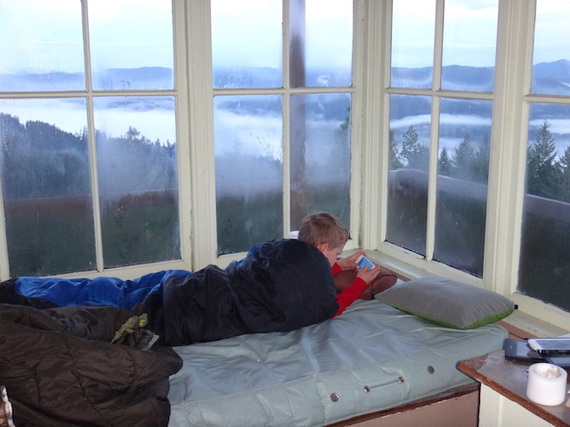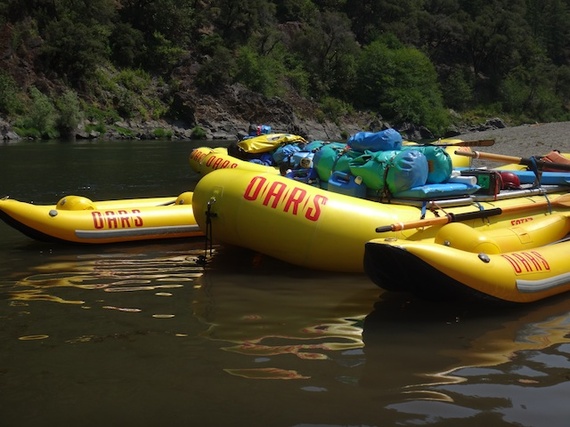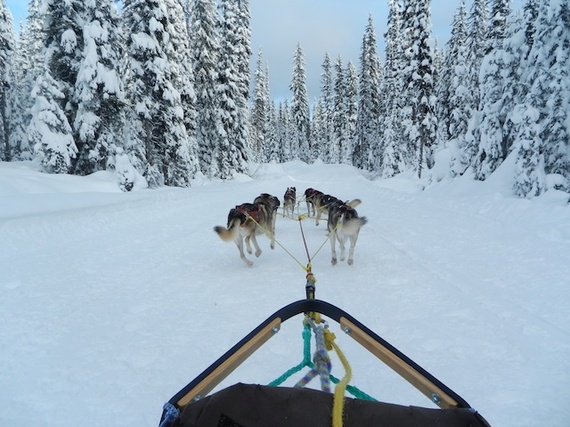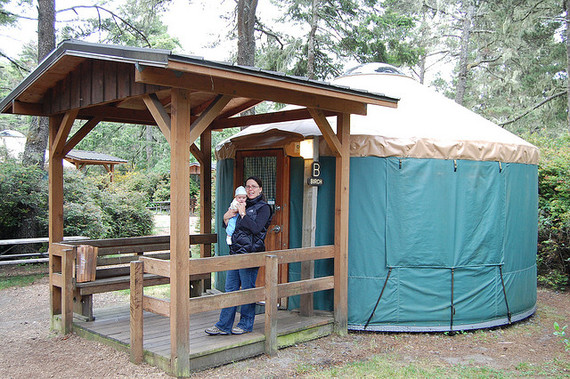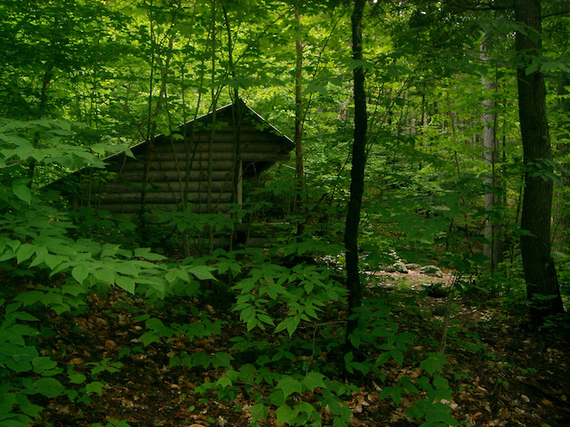When I knew my family and I would be spending time in Jackson Hole, Wyoming and Grand Teton National Park, I immediately looked for an OARS trip to take in the area. After our five-day Rogue River rafting trip with OARS, it was the easy choice. OARS is just that good at what they do.

I’ve already talked about what sets OARS apart. In a nutshell, the guides are professionals but also become friends, the service and food is phenomenal, and the overall experience ensures a stress-free, family-bonding time for everyone. Check it out:
OARS’ 2-day Jackson Lake kayak trip departs and returns to and from Signal Mountain boat dock on Jackson Lake, in the heart of Grand Teton National Park (you’ll need to pay the $20 park fee to get there).

Day 1:
Day 1 takes families across open water to lunch at Marie Island, then approximately five more miles across to Grassy Island, in the shadow of Mount Moran. OARS is the only concessionaire with a permit to camp on Jackson Lake, ensuring we were all alone, within a hairsbreath of the Teton range. We arrived and set up camp around 4:30 pm, leaving plenty of time to splash in the water, read a book, or play a card game before appetizers. Yes, appetizers.

Dinner consisted of hearty burritos with fresh, homemade salsa (the veggies and herbs chopped up in front of us). For dessert…birthday brownie: one of the two six-year-olds on our trip was celebrating his big day. We camped under the stars (in OARS’ supplied tents), and a campfire with our fellow kayakers.

Day 2:
On Day 2, it’s all about exploring the Tetons from the vantage point of the water and trails. We broke camp after a leisurely breakfast of French toast and bacon, and hit the water around 10 am. We paddled to Bearpaw Bay, where we caught the trail to Bearpaw Lake and Leigh Lake. This two-mile hike doesn’t include much elevation gain, which meant even the youngest in our group could navigate it, while the rest of us still found it to be a decent length.

After a swim in Leigh with a picnic lunch, we paddled on to Spalding camp, on the mainland overlooking the Tetons. Once again, our campsite was our own, thanks to OARS’ exclusivity. We BBQed burgers for dinner (and when I say ‘we’, I mean our amazing OARS crew) and settled in for riddles and games of Uno around the campfire.

Day 3:
We broke camp on Day 3 around 9 am, and paddled at a leisurely pace back to the boat dock, none of us anxious to arrive! I asked my kids: how does the kayak trip compare with an OARS whitewater rafting trip? Calvin (age 13) said the two simply couldn’t be compared, but loved both. Before our kayak adventure, he feared the trip would be too tame, with perhaps too much downtime. We found this to be untrue. While a whitewater trip packs more adrenaline-inducing excitement, the kayak trip requires more muscle and includes just as much sightseeing. On both trips, we had stellar guides (shout out to Nate, Marcus, and Max this time around!).

Things to know before you go:
On any OARS trip, it’s very important to have the right clothing and gear. The weather is all over the map in the Tetons, so bring layers. If you follow the packing list, you’ll be fine. We were especially glad to have long underwear for night, and light gloves and hats for brisk mornings. OARS supplied us with splash jackets (like rain jackets) for use in the kayaks, and tents. When you book a trip, you have the option of bringing your own sleep kit, or renting one of theirs. Our recommendation: bring your own sleeping bag if you have one rated to 20 degrees, but opt to rent their sleeping pads. They’re thick and puffy, and you’ll be glad you did!

On our previous OARS trip, beer, wine, and soda were included. On this trip, soda was available, but beer and wine was BYO. If you hand over your wine and beer to the crew, they’ll keep it chilled for you! We all shared during the trip, which was a nice touch.

Bring a few small games or other entertainment for camp time. We like to bring a deck of cards and books or Kindles. Leave iPods or gaming devices at home or in the car. We had cell service for most of the trip, but without anywhere to charge phones, it was easier to leave those in the car as well.

In short, OARS is able to access a part of Jackson Lake and Grand Teton you otherwise wouldn’t be able to see, and show it to you in a way that allows for family togetherness, relaxation, and carefree fun. Pair it with 2-3 additional nights in the park or adjacent Yellowstone National Park, and know you’ll be in good hands!
As I disclose whenever applicable, we experienced this OARS trip as guests of the company, for the purpose of review. All opinions are our own.




























